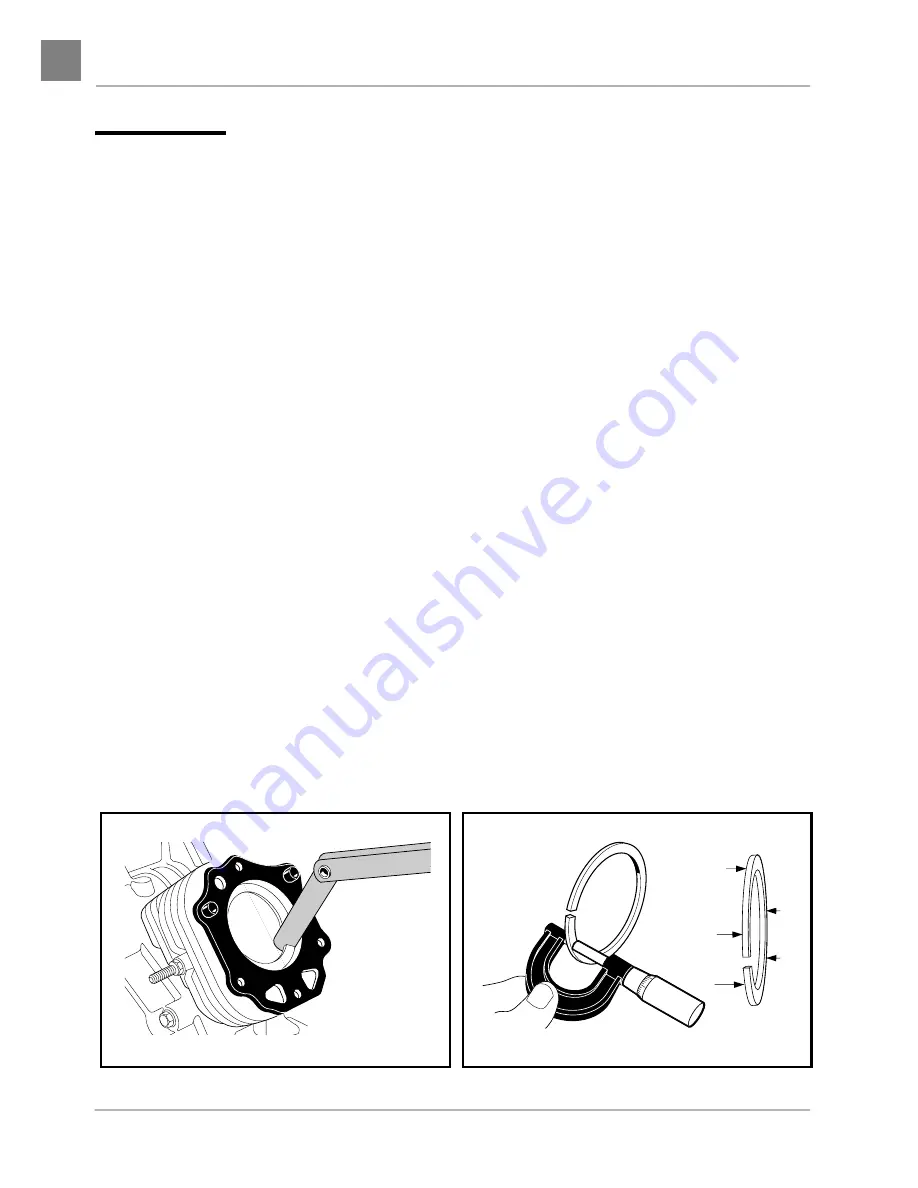
FE350 ENGINE
Piston and Connecting Rod
Page 13-28 2001 Pioneer 1200 Gasoline Vehicle Maintenance and Service Manual
13
∆ CAUTION
• Never clean the piston head with the engine assembled. Carbon particles will fall between the piston
and cylinder wall and may cause severe cylinder wear.
3. Be sure the oil return passages in the ring grooves are open.
4. Visually inspect the piston rings and ring grooves for uneven wear or damage. Replace the piston and/
or piston rings if uneven wear or damage is present or if they exceed the wear limits.
5. Using a new piston ring and a feeler gauge, measure the clearance between the grooves and ring at
several points around the grooves (Figure 13-52, Page 13-27).
6. If the top groove has a clearance greater than 0.0063 inch (0.16 mm), replace the piston.
7. If the second groove has a clearance greater than 0.0055 inch (0.14 mm), replace the piston.
8. The oil ring is made of three pieces: upper and lower rails and expander. It is difficult to measure the ring
groove clearance and thickness. Inspect visually for wear or damage.
Piston Ring Inspection
1. Insert the ring squarely into the cylinder bore to a point approximately 1 inch (25 mm) down from the
top the cylinder. See following NOTE.
NOTE: Use the top of the piston to push the ring into the bore to be sure it is square.
2. Using a feeler gauge, measure the ring end-gap (Figure 13-53, Page 13-28).
3. If the end-gap of any ring is greater than 0.0472 inch (1.199 mm), replace the entire set of rings.
4. Using a micrometer, measure the thickness of both piston rings at several points around the rings (Fig-
5. If either ring thickness is less than 0.0566 inch (1.438 mm), replace the entire set of rings.
NOTE: It is difficult to measure exactly the oil ring thickness. Replace the oil ring whenever the compression
rings (top and second) are replaced.
Figure 13-53 Measure Ring End-Gap
Figure 13-54 Measure Piston Ring Thickness
A
B
C
D
E
















































